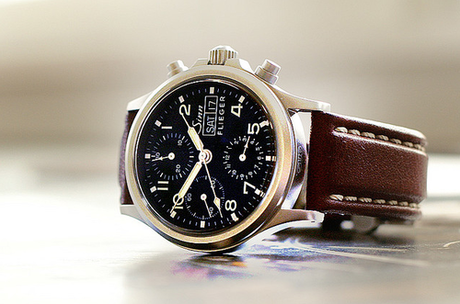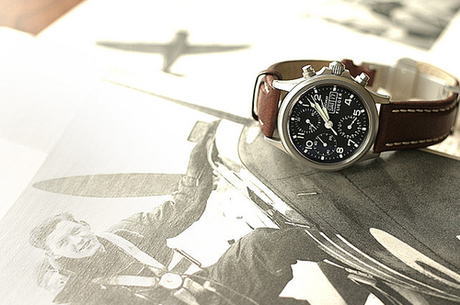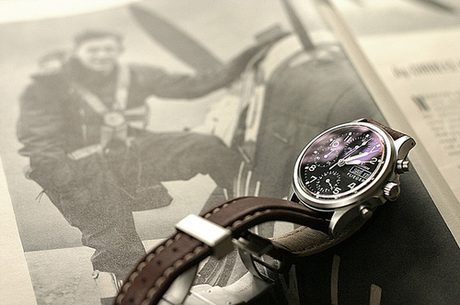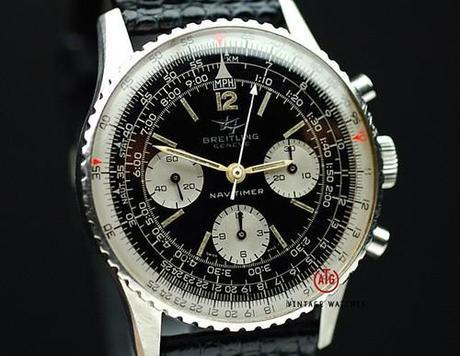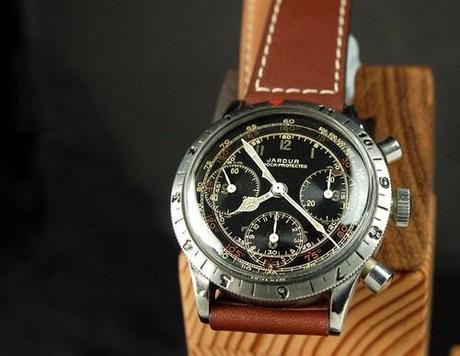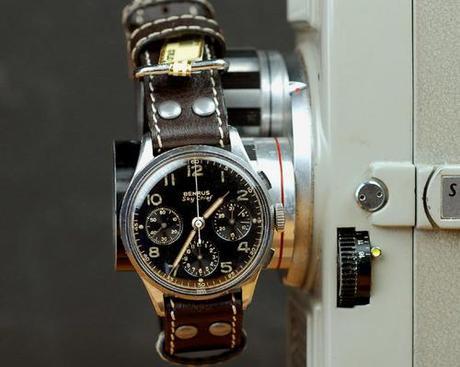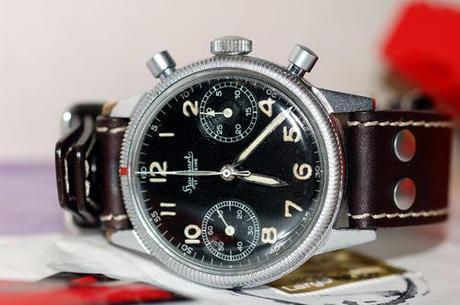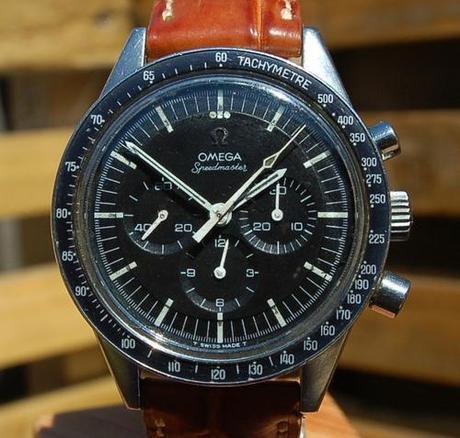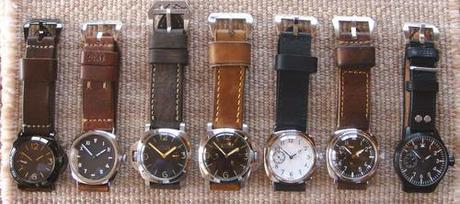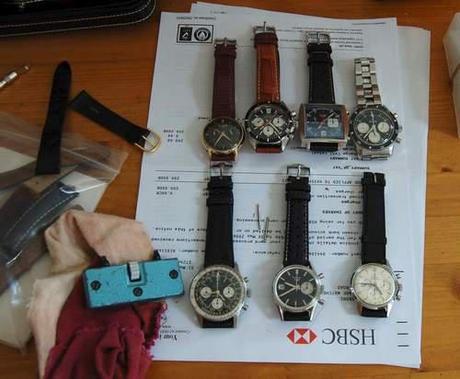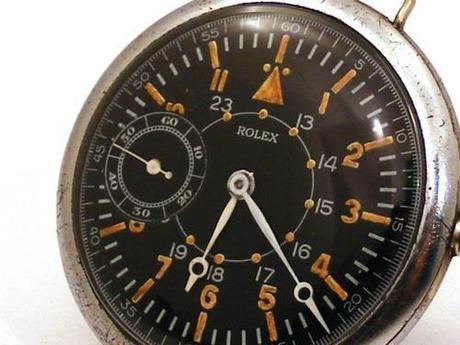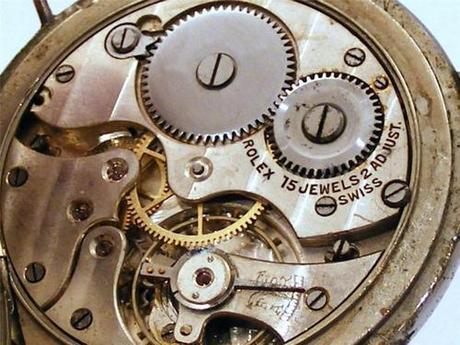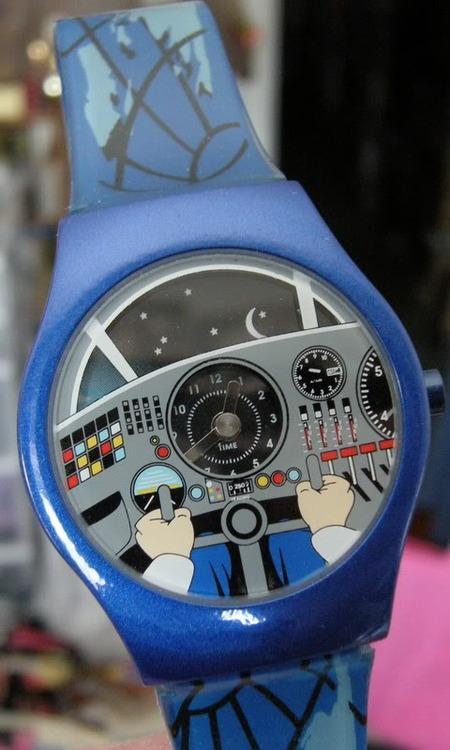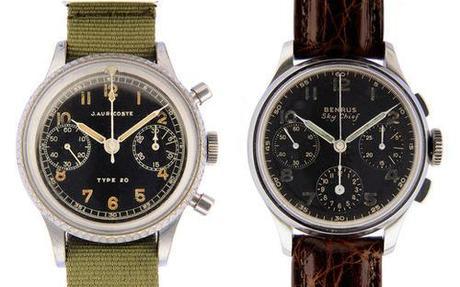
I only own one watch – a Rolex Oyster Perpetual Datejust from the late 1960s, which I inherited from my father. It goes reasonably well with a coat and tie, or something more casual such as an OCBD and a pair of khaki chinos. Lately, however, I’ve been wearing things such as 3Sixteen jeans, Brooks’ shell cordovan boots, some kind of casual shirt, and either a Belstaff Roadmaster or Nigel Cabourn Surface jacket on weekends. I know, somewhat ironic for a guy who runs a site called “Die, Workwear!,” but what can I say. In any case, my current watch feels a bit too dressy with such ensembles, so I’ve been thinking about getting something more casual and rugged.
Pilot watches have come to mind. The most obvious in this range are the German Fliegers made by companies such as Stowa, Laco, and Steinhart. I know little about horology, but from what I’ve read, all three make decent timepieces. Jesse, my colleague at Put This On, wrote about Stowas here. For something similarly styled, but more affordable, there’s also CWC, Maratec, and MWC. The last of these doesn’t seem to get much respect on watch forums, unsurprisingly, but friends of mine who are enthusiasts say they’re perfectly fine if you’re just a casual buyer.
I’m also considering getting something vintage. The downside here is that older models tend to require more TLC. The upside is that they can have a more interesting provenance. Take, for example, these two watches that Hodinkee wrote about (which I’ve also pictured above). The first is a French Aviator’s flyback chronograph called the J. Auricoste Type 20. Apparently, only about 2,000 of these were made, and this particular one was issued in 1955 before it saw a quarter century worth of service in the French Air Force. The second is the Benrus Sky Chief, which was the official timepiece for American pilots working at Delta, TWA, and NWA (no, not that NWA). Apparently, according to one Hodinkee commenter, Benrus Sky Chiefs have longer dashes painted at the 4, 8, and 12 minute marks. This differs them from other mid-century pilot chronographs, which have longer dashes at the 3, 6, and 9 minute markers. The common reasoning for the 3-6-9 dashes is that pay phones in Western Europe required a coin every three minutes, so airmen calling their girlfriends back home could remember when to make another payment. For Benrus’ 4-8-12 configuration, it’s been speculated that it helps pilots determine their plane’s position. Apparently, to do this, pilots had to examine a celestial body via a sextant every four minutes, and take exactly three observations. You can read more about it here. As I said, better provenance.
A friend of mine Stephen, who used to run that fantastic blog called The Simply Refined, recently picked up a full-time gig at Hodinkee. He’s been helping steer me through the ins and outs of these things, and has also suggested that I look into Sinn 356. That one might be the most practical since it has a smaller face, which will look less awkward on my skinny wrists, and it won’t be as delicate as a mid-century piece. I’m giving myself six months or so to mull on it, but for the time being, I think I’m between trying to find something vintage or putting my own story into a Sinn.
